Production: The Shoot
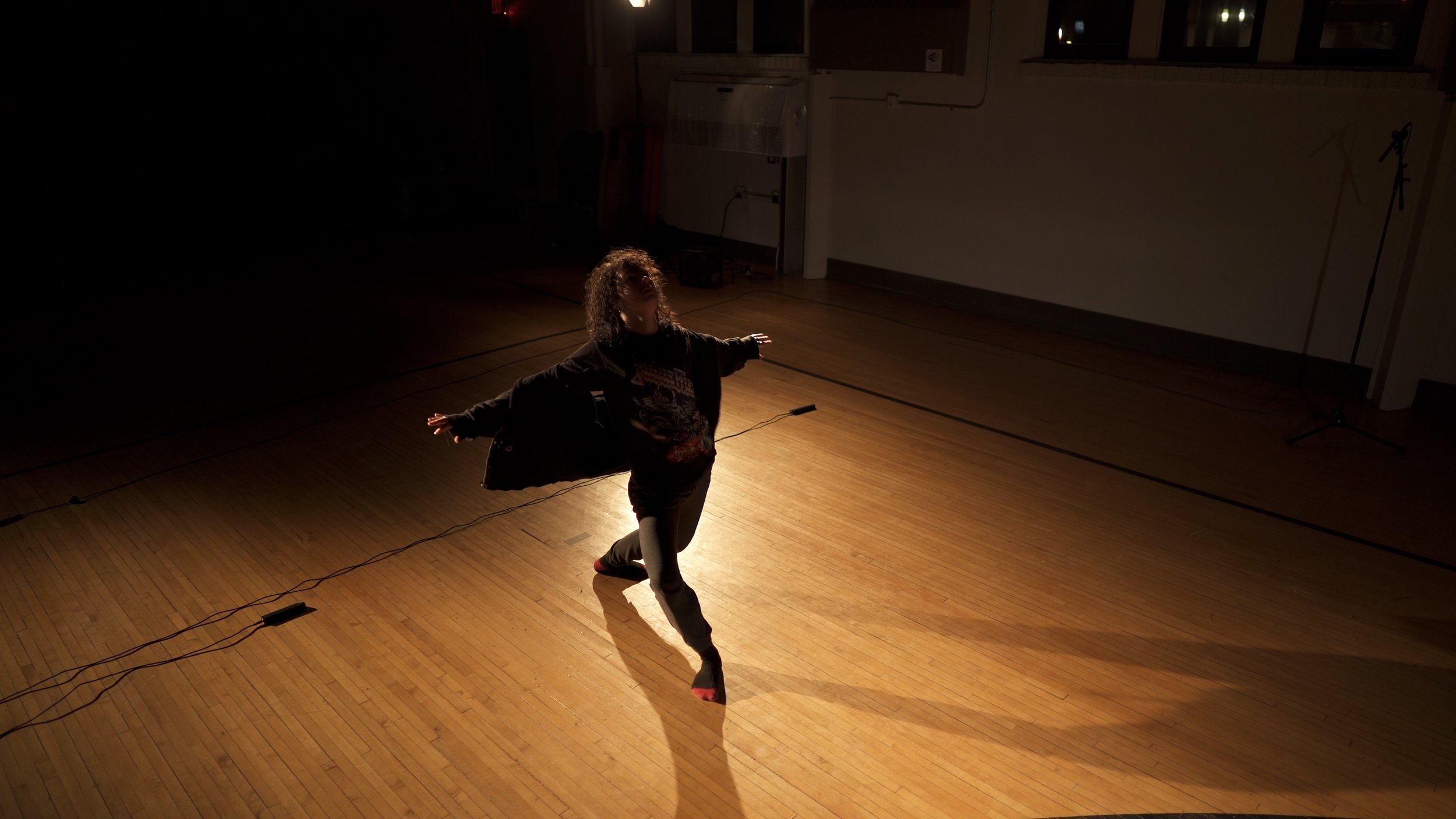
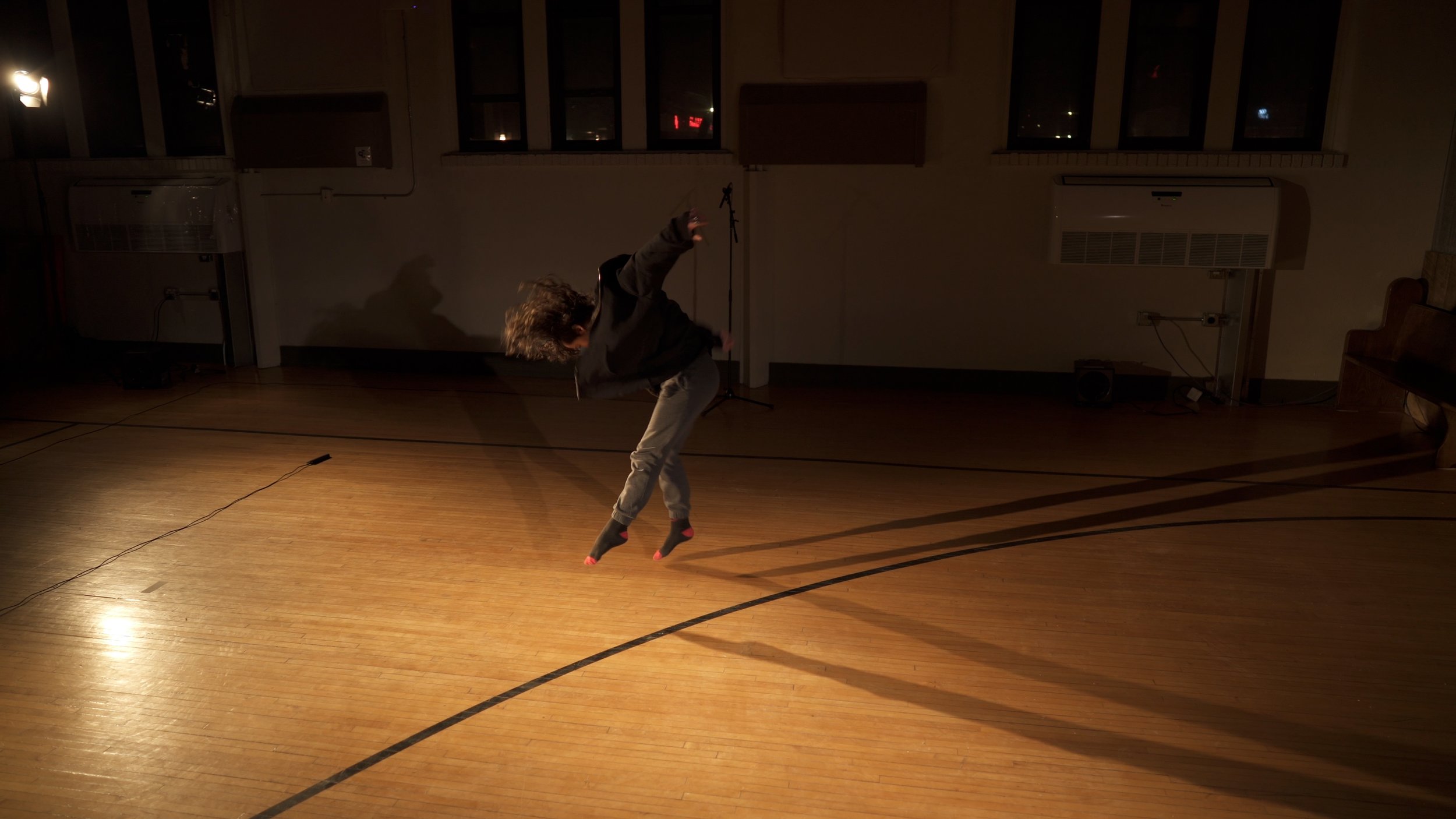
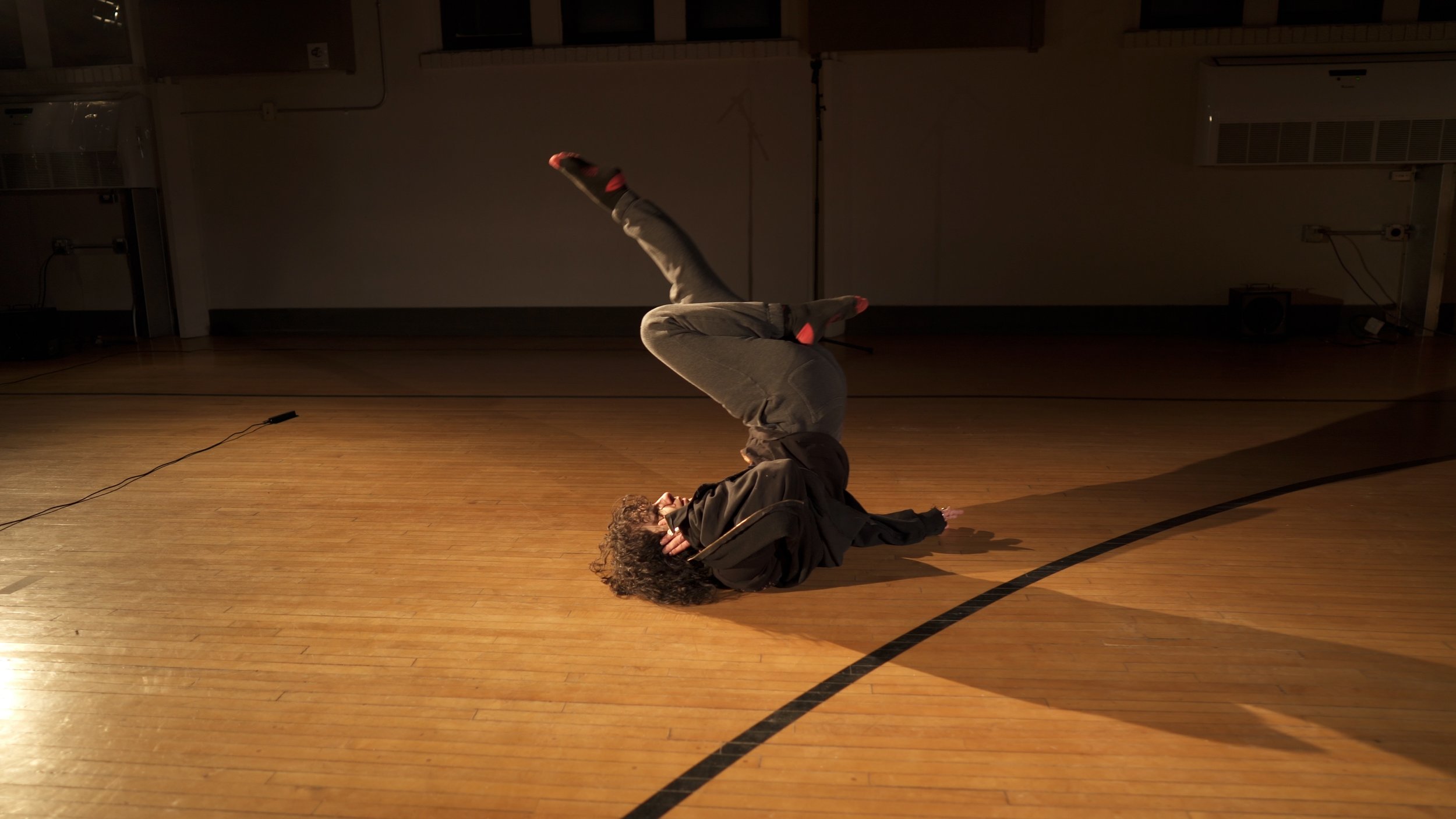
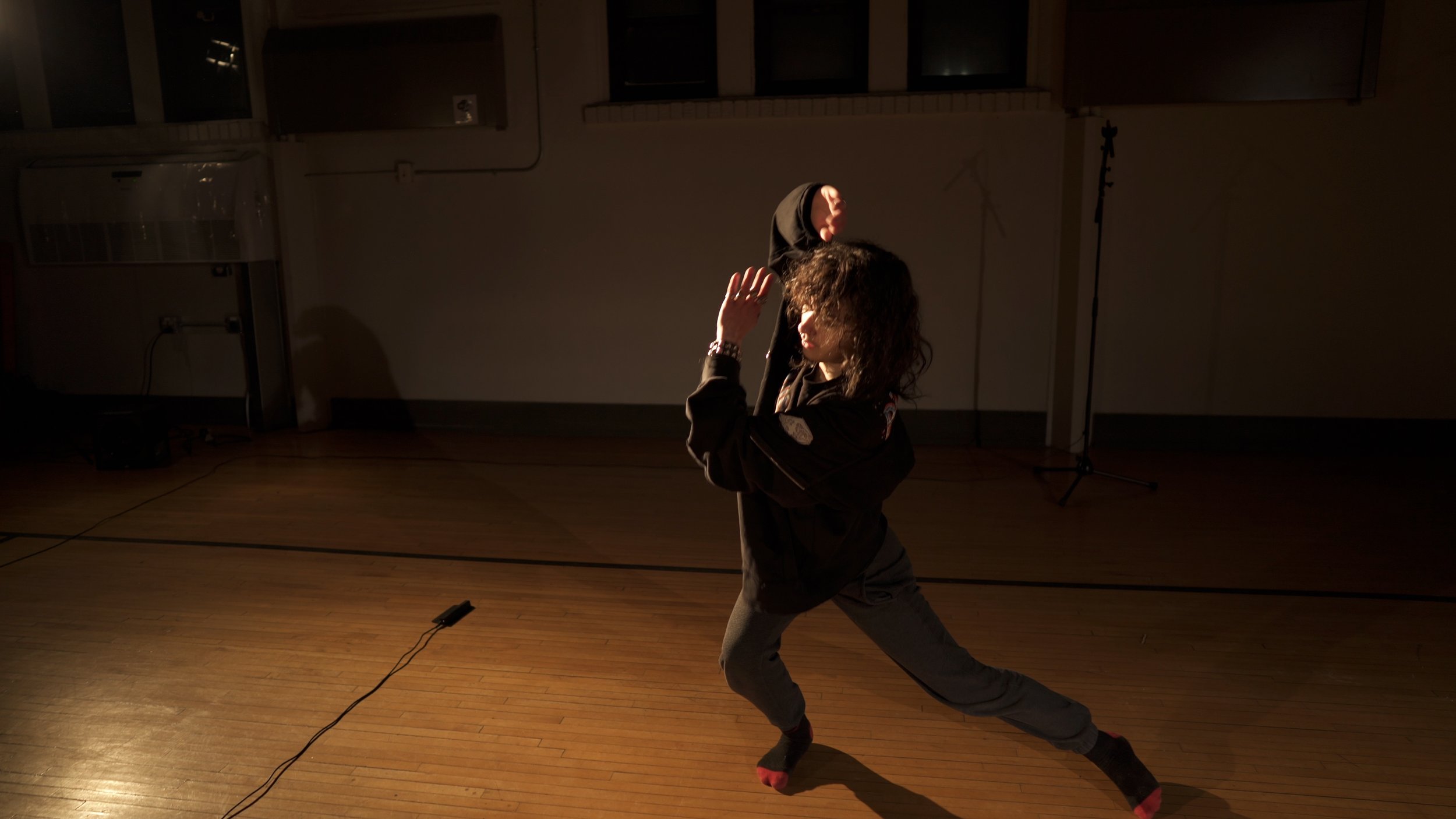
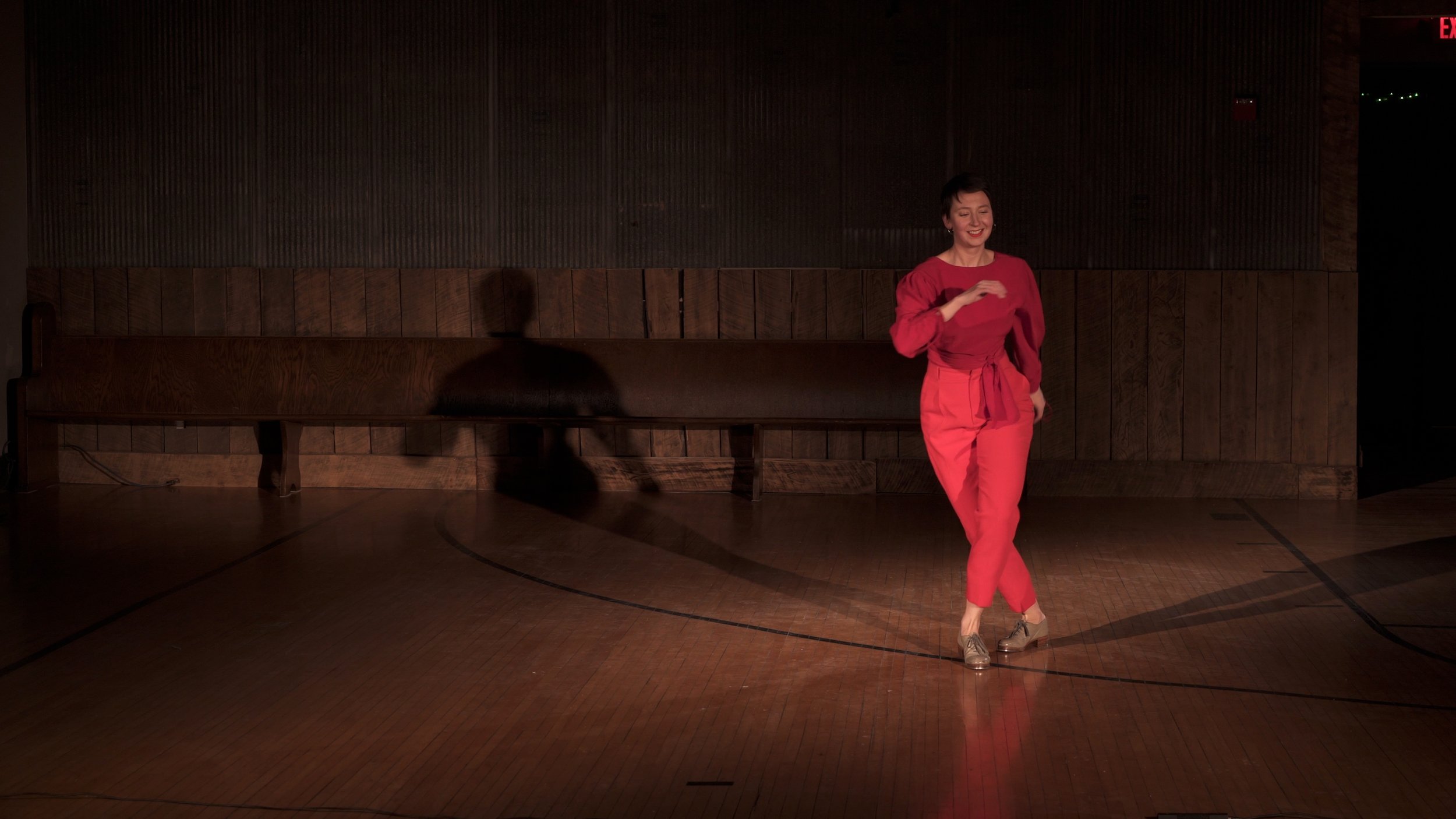
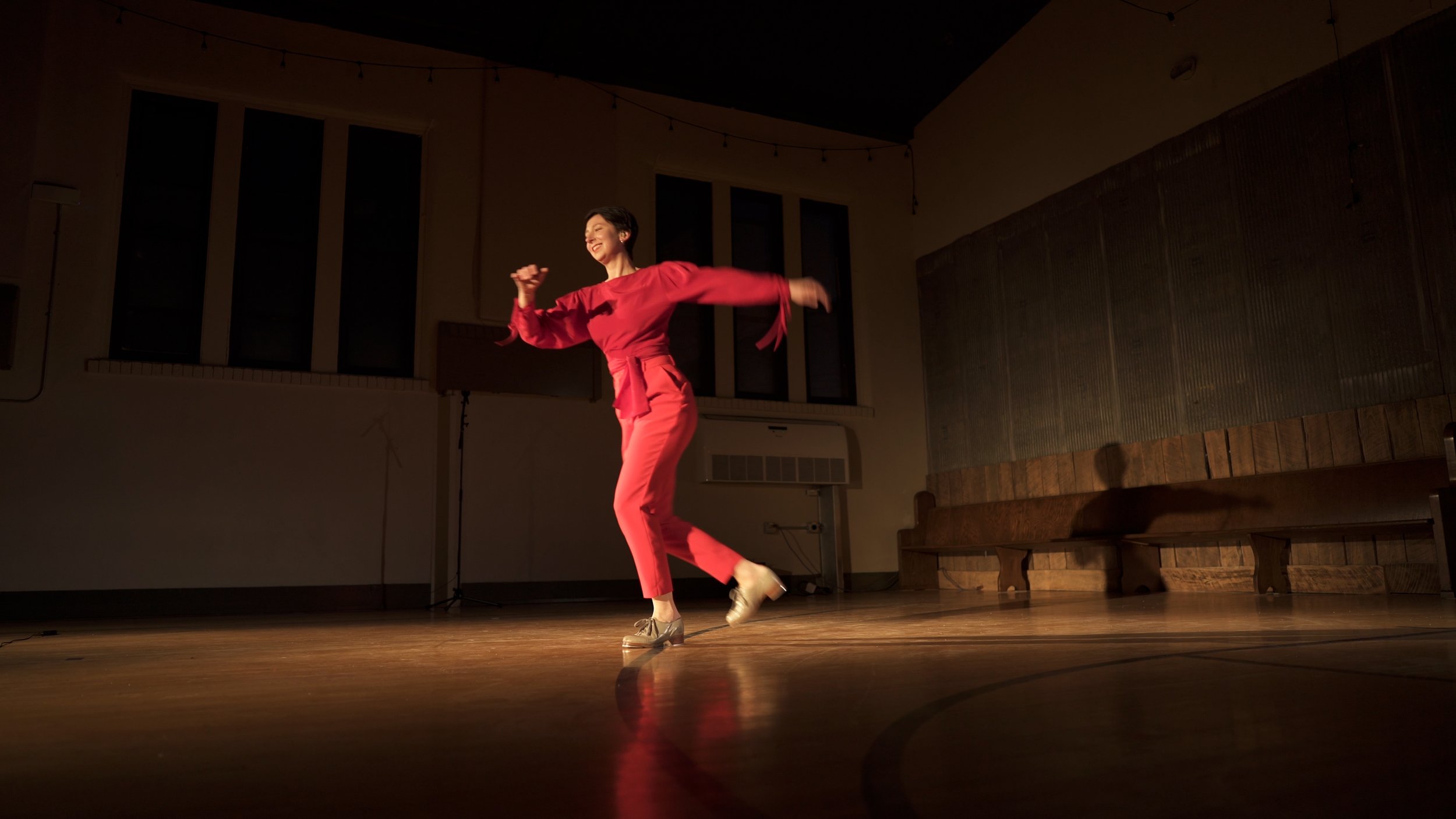
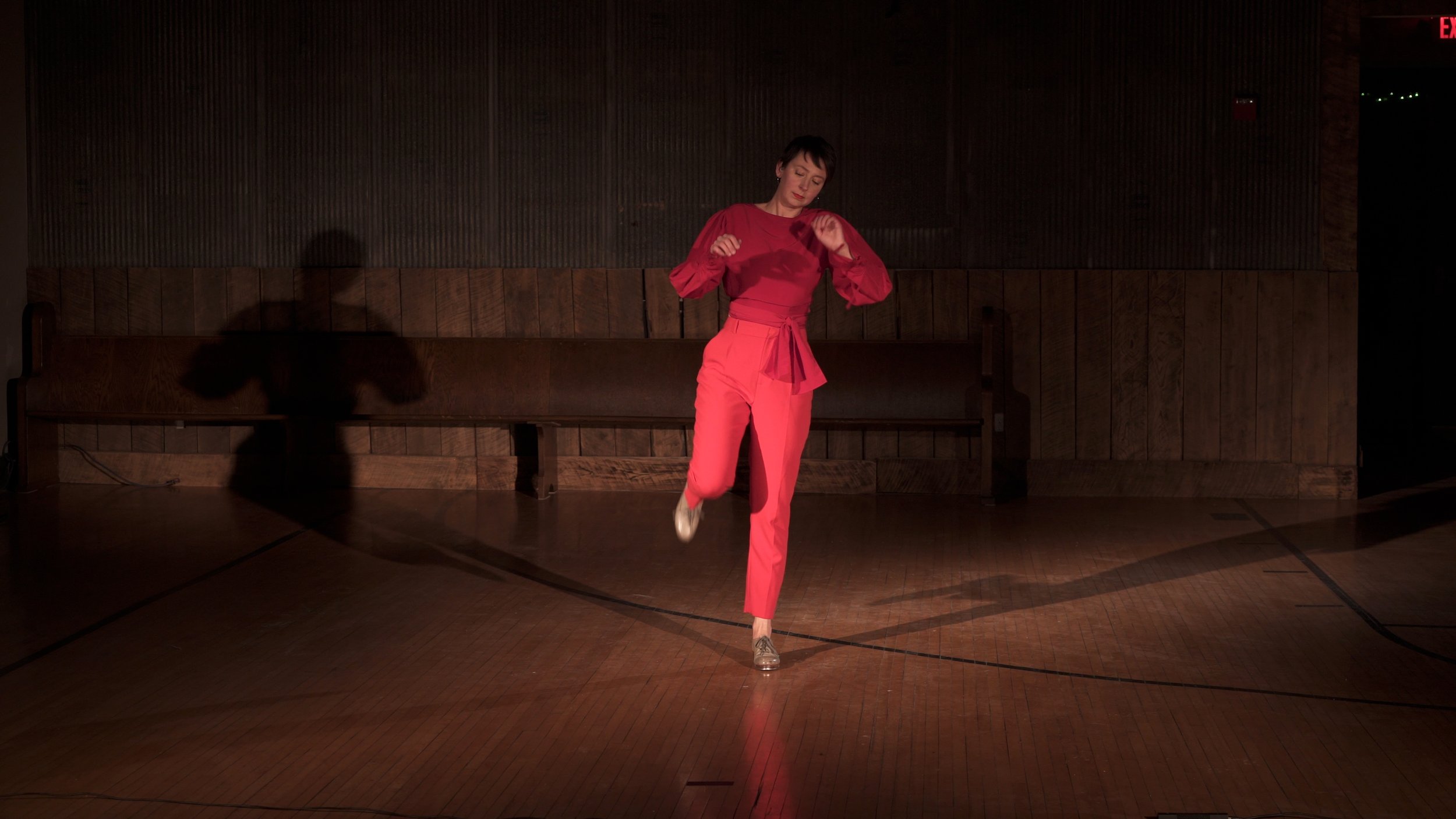
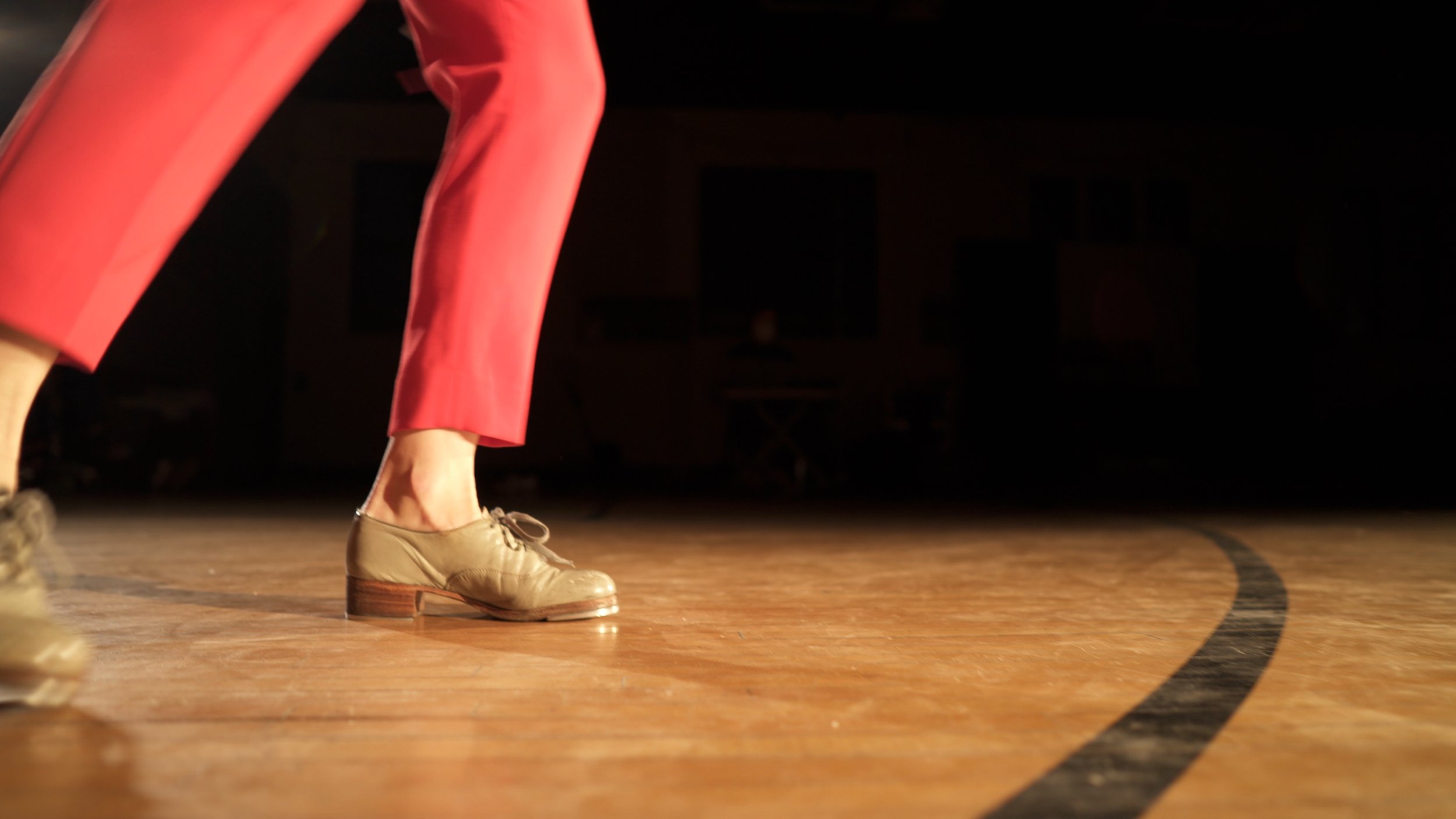
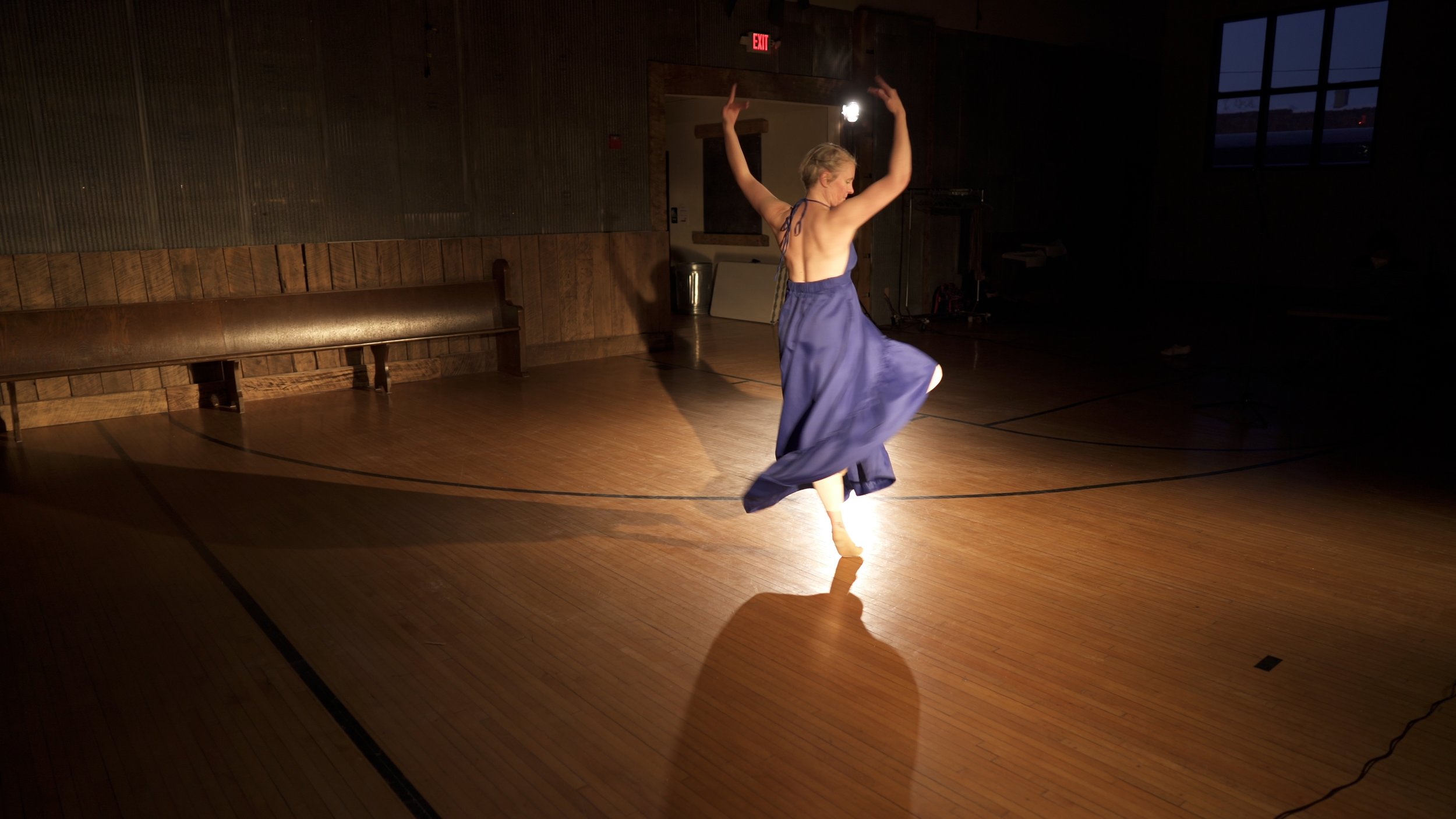
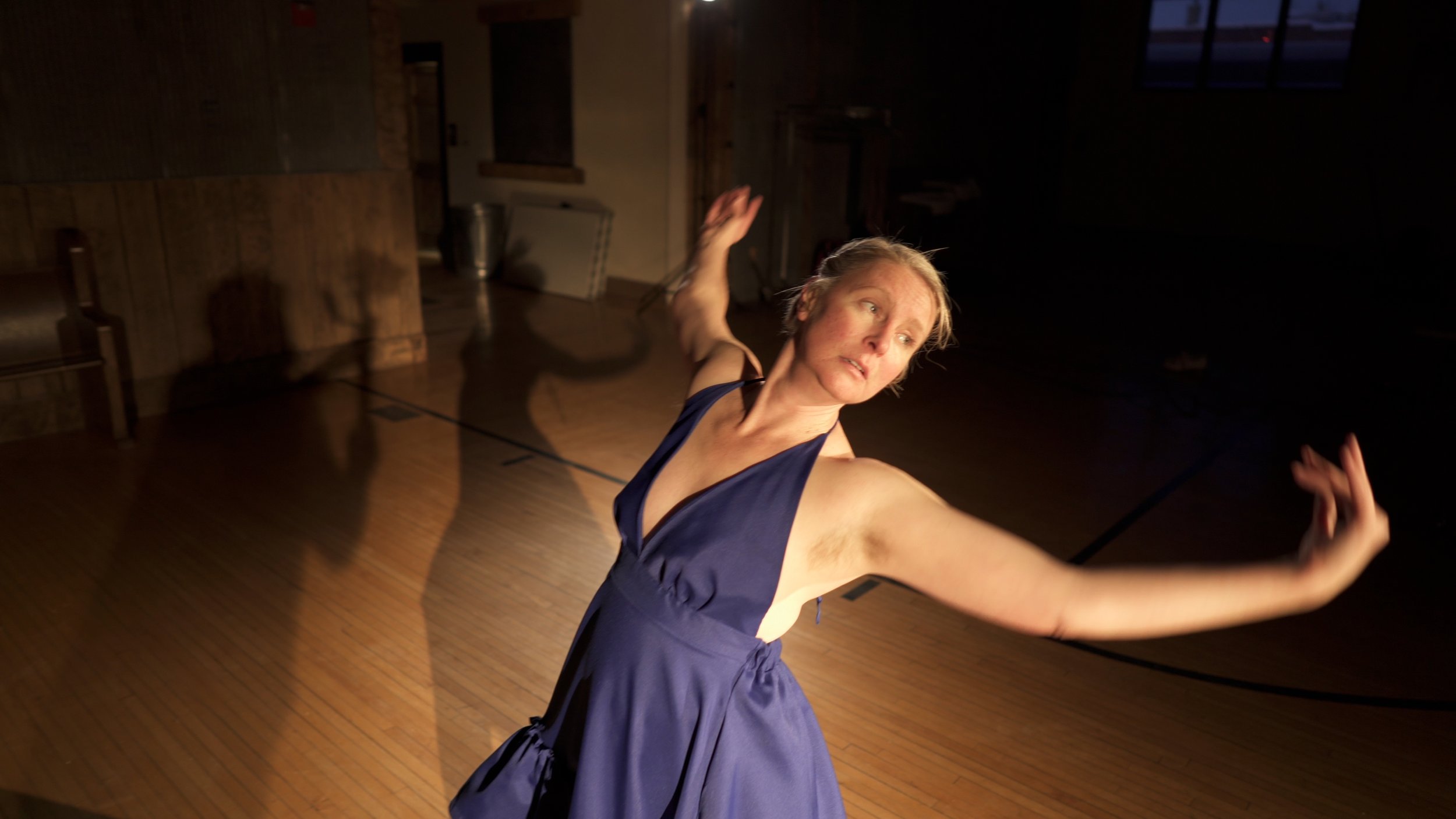
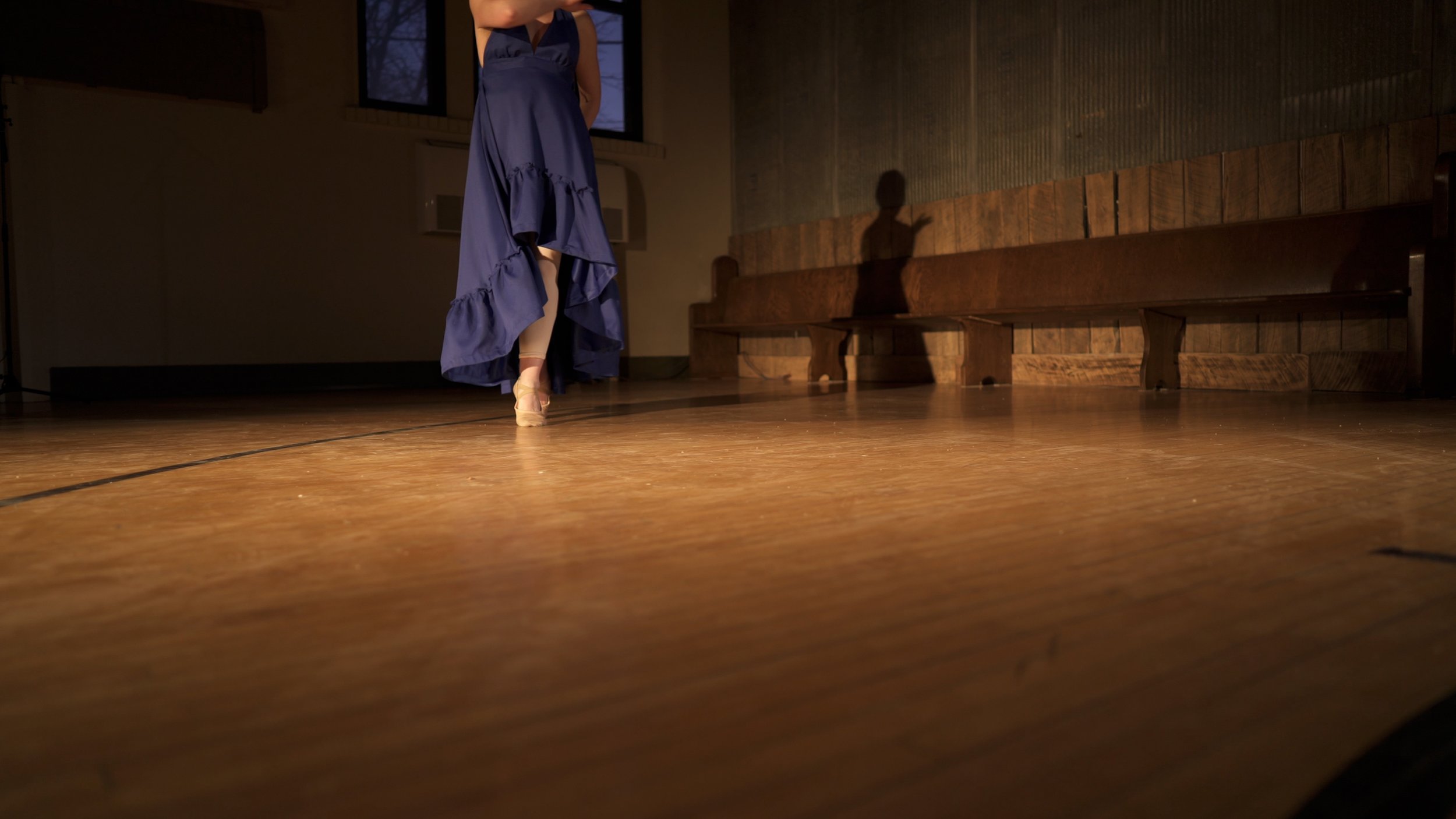
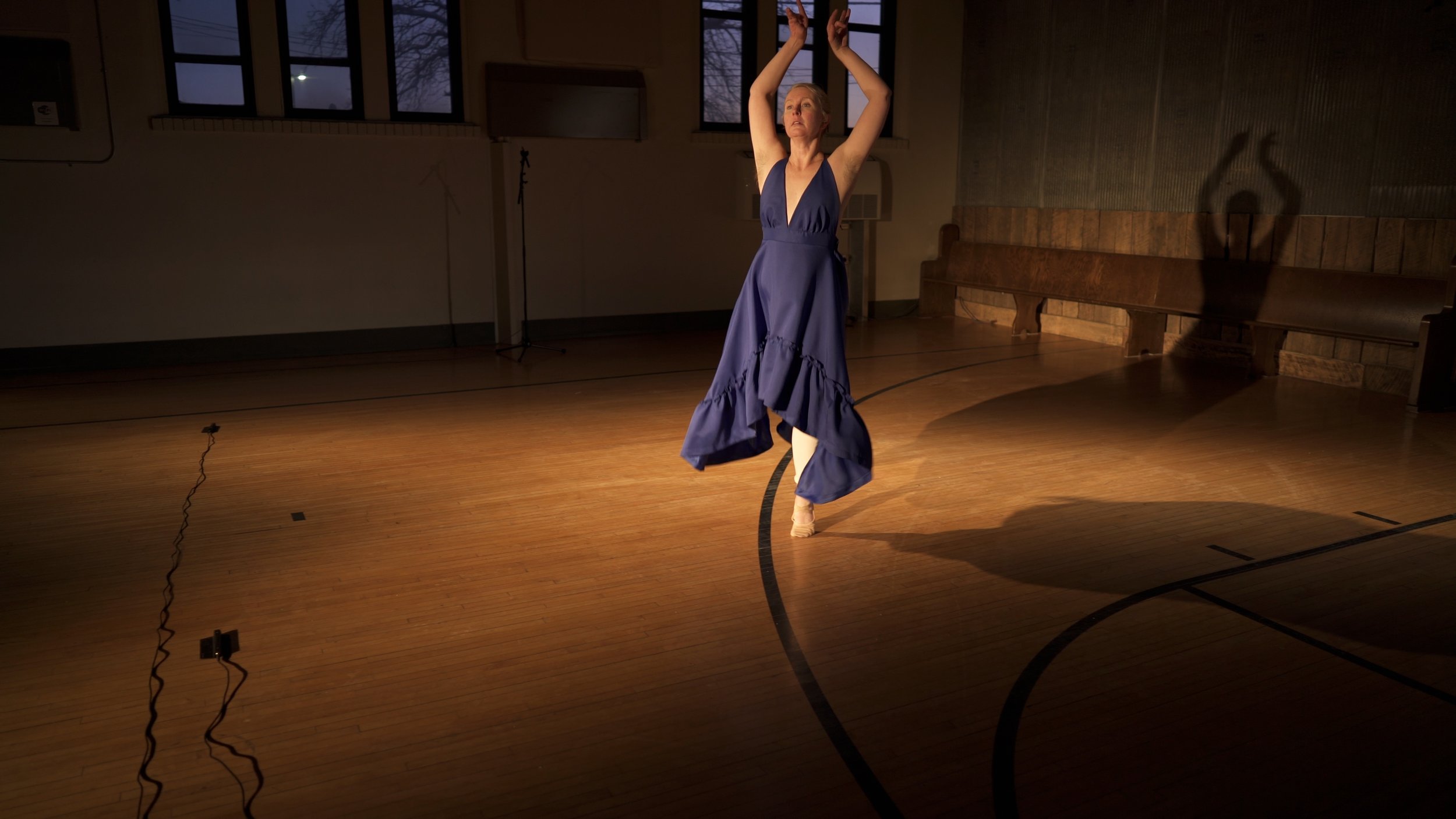
Production Stills from “Improvisations”
After lots of planning (including casting and technical preparation), the day of the shoot arrived on Thursday, December 22, 2022. I find production days to be incredibly exhilarating and stressful, as so much work has been done to get us to that point and I feel I have to be on my toes to adapt to changes that come at you fast when you are in the director’s chair.
Production Day Anxiety: Knowing What Can Go Wrong and Adapting Quickly
Because the inspiration for this film is related to breaking the chains of performance anxiety, I’d like to take a moment to describe another form of anxiety I experience in my art making: production day anxiety. On production days, I am in a constant state of fight-or-flight as I respond to common issues I have experienced in the past, and I often lose sleep leading up to the shoot.
Though I work hard in pre-production to develop a solid shoot schedule that covers the basic questions (Are the performers all available? Do I have the space aligned? Who arrives when?), lots of things can and do change throughout the day. I have to respond quickly and confidently, keep it together and stay strong as a leader to get the team through the issue.
Anxiety Source #1: Load In
Getting all of the gear in one place and in one piece is stressful. I don’t go all that far with equipment, as all of my gear is either owned or rented within a radius of 40 miles of my home. Nevertheless, this is a cause for concern. Here’s what the list of what I gathered as I prepared to haul gear to the location for this particular shoot. I’m extremely forgetful so need to make piles and walk through the list multiple times.
Do I have the things to shoot video?
Camera A and Camera B (two Sony A7sii models)
Lenses (a 24-70mm f/4 zoom and a 25mm f/2 prime) which I have attached to the proper camera body, plus lens hoods and ND filters for if there are lighting challenges
Lots of charged batteries for the cameras (I usually bring 6), as well as a backup A/C adapter in case batteries fail or are exhausted
Extra memory cards (I shoot in 4K and they fill up pretty quickly)
Tripod (and screwdriver to screw on mounting plate)
Feiyu gimbal mount (which I have charged and balanced to the camera fitted with the lens; lso programmed the camera to use auto focus during shooting with the gimbal
Do I have the things to collect audio?
Tascam field recorder, which phantom powers the mics (hooked up by XLR cables) and mixes the balance of each input
Lots of AA batteries and a backup A/C adapter to power the recorder
Multiple lengths of XLR cables, which hook up a microphone to the recorder
Microphones (2 shotguns and 2 PCC mics)
Memory cards for storing the data in the recorder
Nice headphones so the audio engineer can listen to the tracks for any interference/peaking
Small headphone monitors for the director and dancer (charged)
Laptop and charger for playback of music for the monitors
Do I have the things to light the space?
ARRI lighting kit, including 4 lamps, stands, barn doors and cords
Gels for changing the color of the light source
Clothespins for attaching the gels (forgot this one! My husband bailed me out on the day of the shoot)
Do I have all of the other miscellaneous things that could be helpful?
Cinefoil in case we need to shape the light
Gaffer tape for securing cords and marking off areas (ex: I put a few pieces on the floor for marking what zone of the floor the dancers should remain in)
A buttload of extension cords and heavy duty power strips
Clorox wipes for disinfecting shared equipment (I wiped down the ear monitors before giving them to the next dancer)
Snacks and water (in case someone is starving or thirsty)
A small table for setting up the audio station
A music stand holding a sign warning people in the entryway that there is a shoot going on
Backups and Extras
And these are just the things I brought. My team thought to bring all kinds of other things. Kent brought an extra camera, tripod, lenses and shotgun mic as a backup (we ended up using his microphone). Heri brought an amazing 360º tripod and GoPro that we did special shots on, as well as extra poles for mounting the gimbal and even a bubble maker to experiment with during the shoot. Daniel brought all of the extra cords and adapters, and extra microphones and backup equipment.
Pack It Up
It’s so important to have everything together so that you don’t risk delays to your shoot timeline by having to run an errand to go grab things you forgot. It’s also important to pack things up in hard and soft cases so that equipment is protected in case of jostling or dropping during load-in.
Anxiety Source #2: Possible Dealbreaker Unanticipated Changes
These are the things that can go wrong that are often beyond your control, but good communication and preparation can help prevent issues.
The Possible No-Show
A no-show can be horrific if it’s a key cast or crew member. The production relies on a team and if there is a member missing, it can be extremely difficult to adapt. No-shows can happen due to things beyond your control, including:
Weather events. We shot this production during an extreme cold snap and blizzard (I love living and working in the Midwest, and this unfortunately comes with the territory). We experienced low temps well below zero combined with high winds that made travel potentially dangerous. Kaleena, our tap dancer, was staying in Minneapolis, 40 miles from our shoot location, and it was touch-and-go on whether she would be able to make it through the weather. We communicated frequently throughout the day and explored many options, including rescheduling. I take the safety of my cast and crew very seriously, and wanted us to all come to an agreement that as comfortable for all parties. Ultimately, we decided my husband Kevin would brave the elements to pick Kaleena up during a part of the day where the sun was out and far less black ice covered the roads, making travel less dangerous.
Illness. We live in the times of COVID-19, and if someone has it or any other contagious illness, they cannot come to a shoot. Case closed. Luckily we did not have to deal with this issue.
Forgetting/scheduling errors. This happens when there are breakdowns in communication. I made it a point to check in with my cast and crew the week of the shoot via phone call or text message. I confirmed arrival times and fielded lots of questions about what was going on with the weather as the forecast was dicey.
Equipment Failure
Early in my filmmaking career, I experienced the stomach-dropping moments where you realize there has been an equipment failure and I’ve lost footage (once I had shot several hours of footage without audio, rookie mistake). This can be a big issue because it can set you back on your timeline for the day as you either need to re-shoot or configure a replacement. This is why I follow these guidelines I’ve learned throughout the years.
Bring backups for the backups. Redundancies of equipment are so helpful in case something goes wrong. This can include small things like extra batteries or A/C adapters, and bigger things like Kent having brung an extra microphone and entire other camera setup. Special shoutout to Daniel Edwins for teaching me this when we have worked together on live productions at our day job in marketing.
Test your setup before you start rolling. Record sample footage and play it back so you know nothing is awry. Always wear headphones and listen to your audio as it is recorded (That issue I mentioned above? I didn’t bother to check the audio recording with headphones.)
Stop and start your equipment frequently. Although it can be cleaner to keep everything in one take, it is completely devastating if a battery runs out and you lose the footage before it has been written to the memory card. My team starts and stops their takes about every 10 minutes or so, picking judicious moments where the action has stopped for notes or resetting.
Communicate judiciously. Sometimes as a director, you have to make the call on whether or not to be transparent with performers on the equipment failure. If the performer is running out of steam and you need more takes, it can be better to be positive and say, “Everything is great! I want to do that a few more times,” vs. “I’m sorry to tell you that your hard work for the past 15 minutes has been lost.” Keeping people in a positive mindset is important and can really effect the outcome of the shoot.
Luckily, we did not experience equipment failure during this shoot. I can attribute that to the quality of my crew and my experience in the field.
Anxiety Source #3: Major Timeline Shifts
It is always a race to keep on schedule with production. You have to get your work done within the time constraints you are working with. If your shoot goes far beyond the production schedule, you risk the following:
Paying more for the space rental or angering the owner for going overtime as they have to stay later to lock up or clean up. This is not an option for me as I have limited budgets and don’t want to burn any bridges with locations I potentially want to use again in the future.
Cast and crew losing energy. I work with exceptional talent, and humans have a point of diminishing returns on what kind of energy they can bring to the shoot after a certain point. I find that after four hours of shooting time, everyone is tired and needs a major break before returning to the work. I usually avoid scheduling more than four hours of shooting time in a given day.
For this production, we actually moved the timeline up to get started early before the weather got worse later into the evening. Besides Kaleena, the rest of the cast and crew lived within a five-mile radius of the location, but even driving that far in the weather was predicted to be difficult. Here’s what our timeline ended up being:
Pack up at 2:30pm. Having packed most of the equipment the night before, I gather final materials like charged batteries and haul equipment from my office storage (thanks to my employer Neuger for allowing me to borrow some of our production equipment and store rentals temporarily) to a loading area. Kent arrives with his van to load up and head over to the location.
Load-in at 3pm. I consult with Liz, who owns and operates Armory Square, we talk about the space needs (wifi password, heaters, lights) and remind everyone to take off their shoes to avoid tracking in snow and salt on the floor, which will be danced on. Crew begins unpacking equipment and we consult on where to set up in the large space, marking off the area for production.
Talent begins arriving, 3:30pm. Kevin drops Kaleena off at the location, having come early to avoid the weather. She settles in and we consult on wardrobe options, shoe options and she starts testing the floor.
Crew continues setup, 3:30-4:30pm. Wendy sets the white balance in the space on both cameras. Kent configures lighting and Camera A setup on tripod. Heri tests the gimbal and practices working with it. Daniel runs the cables and places microphones, and begins testing the audio balance.
PA arrives, 4pm. Fox Setchell-Kirby, our production assistant, arrives with Shari. Fox helps with setup, including moving equipment and being a stand-in for shot audio testing.
Shoot commences, 4:30-6pm. Each dancer ends up performing 30 minutes each.
Teardown, 6-6:30pm. We take down all of the equipment and pack it up to take back to my office for storage. Everyone is safely home by around 7:15pm.
The Magic Happens
Though I need to be on my game to roll with the punches during the shoot, there is nothing like the feeling of that magical window when the cameras and audio are rolling and capturing the thing you have worked so hard to plan. This short window of time is when the many details have fallen into place and I can take the time to enjoy my passion of directing.
Calling the Shots
I literally called the shots during the shoot. I invited the performer to the space and to warm up by listening to the music track and starting to get comfortable with it. When they were ready, I asked the camera operator A if they were rolling and if audio was rolling and we begun. After the first take, I gave notes to the performers. This looked like:
Offering things that I enjoyed about the performance so far (“I really like how you are playing with levels"/”Great tempo changes”/etc.)
Mentioning any issues (spacing/eyes down/etc.)
Then we began the second take, and midway through I invited Heri to start moving in on the space to collect the camera B gimbal shots. When I felt that there were good options there, I asked the dancers to try takes of the beginning and end of their performance, including walking in the the space and holding a pose.
After that was complete, I called on Fox to help Heri bring in the 360º camera and we got shots of the dancer moving in a single location while the camera swirled around them. Following those takes, I announced a wrap on that performer and the crew clapped for their performance.
Vision Coming to Life
During the shoot, I tried to take a few moments to let the joy and gratitude of the production sink in. I was overwhelmed by how well Shari, Kaleena and Carson performed, even though I knew they were amazing when I cast them. I was astounded by their athleticism of dancing for a solid half hour each, and how well they understood the task at hand. They kept experimenting with new movements while hearing the same music loop over and over, developing new approaches, using new movement vocabularies and trying new tempos.
No one got self-conscious and stopped. No one started to self-edit. No one ran out of ideas and started doing the same uninspired thing over and over. There were challenges, but no one let their frustrations stop their creativity.
I saw in them what spirit I wanted to capture when I set out do make this film: pure artistic creativity flowing in the moment. And that was magic.
Overcoming Obstacles
Looking back, we had a very smooth shoot that I am extremely proud of. It went like clockwork even though it was not challenge-free. Together, the team overcame:
Potentially hazardous weather and the risk of losing a key performer for the shoot.
Cold conditions in the space. As I said before, wind chills were well below zero, and the big space at the Armory can be tricky to heat. Liz graciously ran extra space heaters in the space to help, but we had to turn them off when we started filming to avoid the fan noise polluting the audio track.
Equipment failure. One of the microphones we planned to use wasn’t powering up, so we used one of Kent’s backups.
Forgotten equipment. The essential clothespin (lovingly referred to as a C47 in the industry) was left behind and my husband cleared off our indoor clothesline and saved the day.
Timeline shifts. We adapted to the weather conditions and moved the timeline earlier with permission of the location and the cast and crew.
I am beyond grateful to my team for making it all happen. Each smooth shoot helps me build my confidence to quell future production day anxiety – I can rest assured knowing that I have dealt with many issues in the past and have worked with the team to create an incredibly positive experience.
